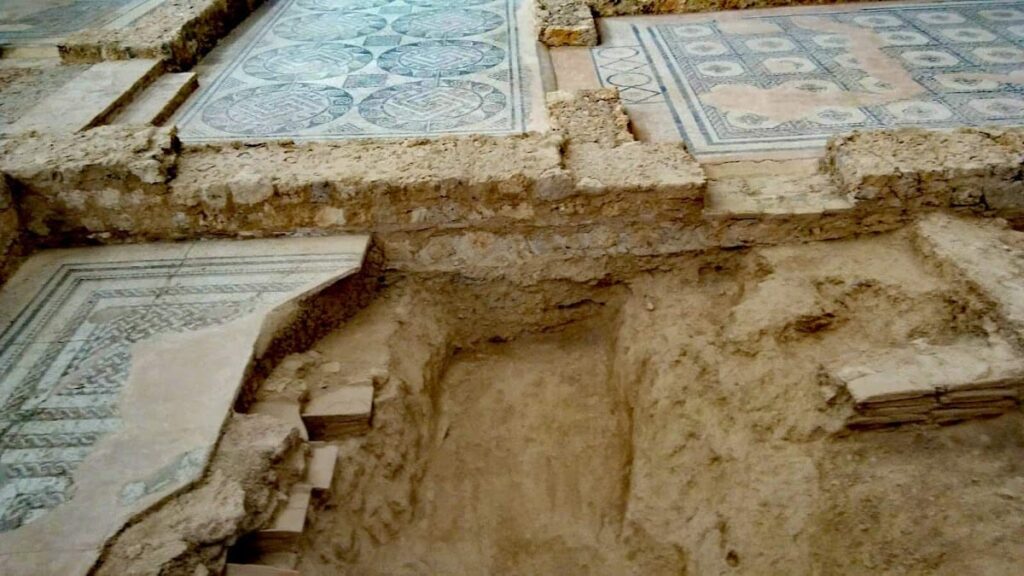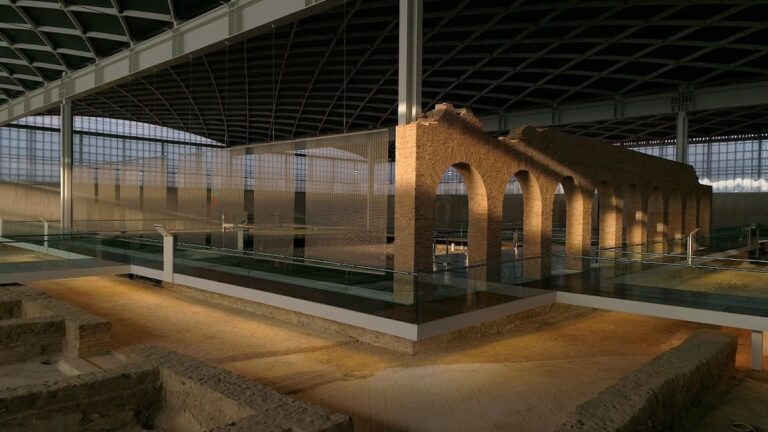La Tejada Roman Villa: An Ancient Roman Site in Palencia, Spain
Visitor Information
Google Rating: 4.4
Popularity: Low
Google Maps: View on Google Maps
Official Website: www.villaromanalaolmeda.com
Country: Spain
Civilization: Roman
Remains: Domestic
History
La Tejada Roman Villa is situated near Quintanilla de la Cueza in the province of Palencia, Spain. It was established by the Romans along a significant transportation route that linked Burdigala (modern Bordeaux) with Asturica Augusta (present-day Astorga). This ancient road, which corresponds to the current N-120 highway, was an artery for commerce and travel during the Roman Empire. The villa’s location adjacent to the Camino de Santiago further underscores its strategic importance in antiquity.
The site was occupied continuously from the 1st century through the 5th century A.D., spanning much of the Late Roman Empire. This extended period of use suggests the complex adapted to changing social and economic conditions over several centuries. While traditionally classified as a rural villa or agricultural estate, evidence indicates it may have also served as a bath complex catering to travelers along the Roman road, reflecting a multifunctional role in the region.
The place name “La Tejada” derives from the land parcel where the remains were discovered in 1970.
Remains
The excavated portion of La Tejada Roman Villa reveals a complex of thirteen rooms arranged along a north-south axis. The structures are built primarily of limestone masonry, interspersed with horizontal rows of brick, demonstrating typical Roman construction techniques. A prominent covered corridor runs east-west, with six mosaic-floored rooms on its northern side and additional chambers likely used for storage.
The floors of the main rooms are adorned with intricate mosaics featuring geometric and figurative motifs. Designs include Solomon knots, checkered patterns, swastikas, and interlaced ribbons. Mythological scenes are also depicted, such as Leda and the Swan, Oceanus accompanied by dolphins and fish, representations of the Four Seasons, and Neptune with Amphitrite. One mosaic presents a complex geometric fish pattern, highlighting the artistic sophistication of the site.
Wall paintings survive in several rooms, displaying geometric shapes, plant motifs, and imitations of marble surfaces. These murals contribute to the luxurious character of the complex. The villa also contains an advanced hypocaust system, an underfloor heating method supported by brick pillars, arches, and subterranean galleries, indicating the presence of heated rooms, likely baths.
Only a fraction of the entire site has been excavated, with the remains preserved in situ under protective structures.










